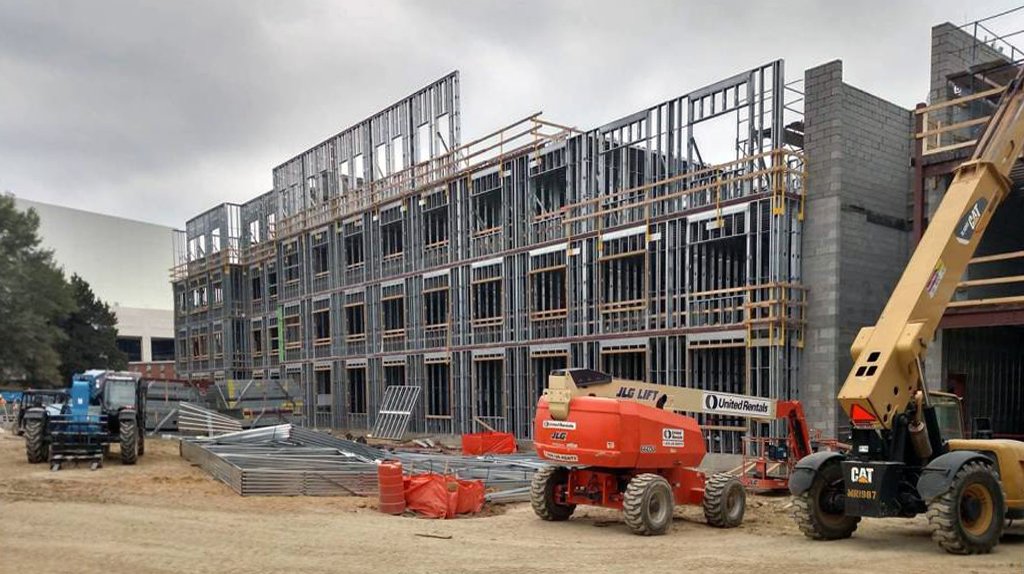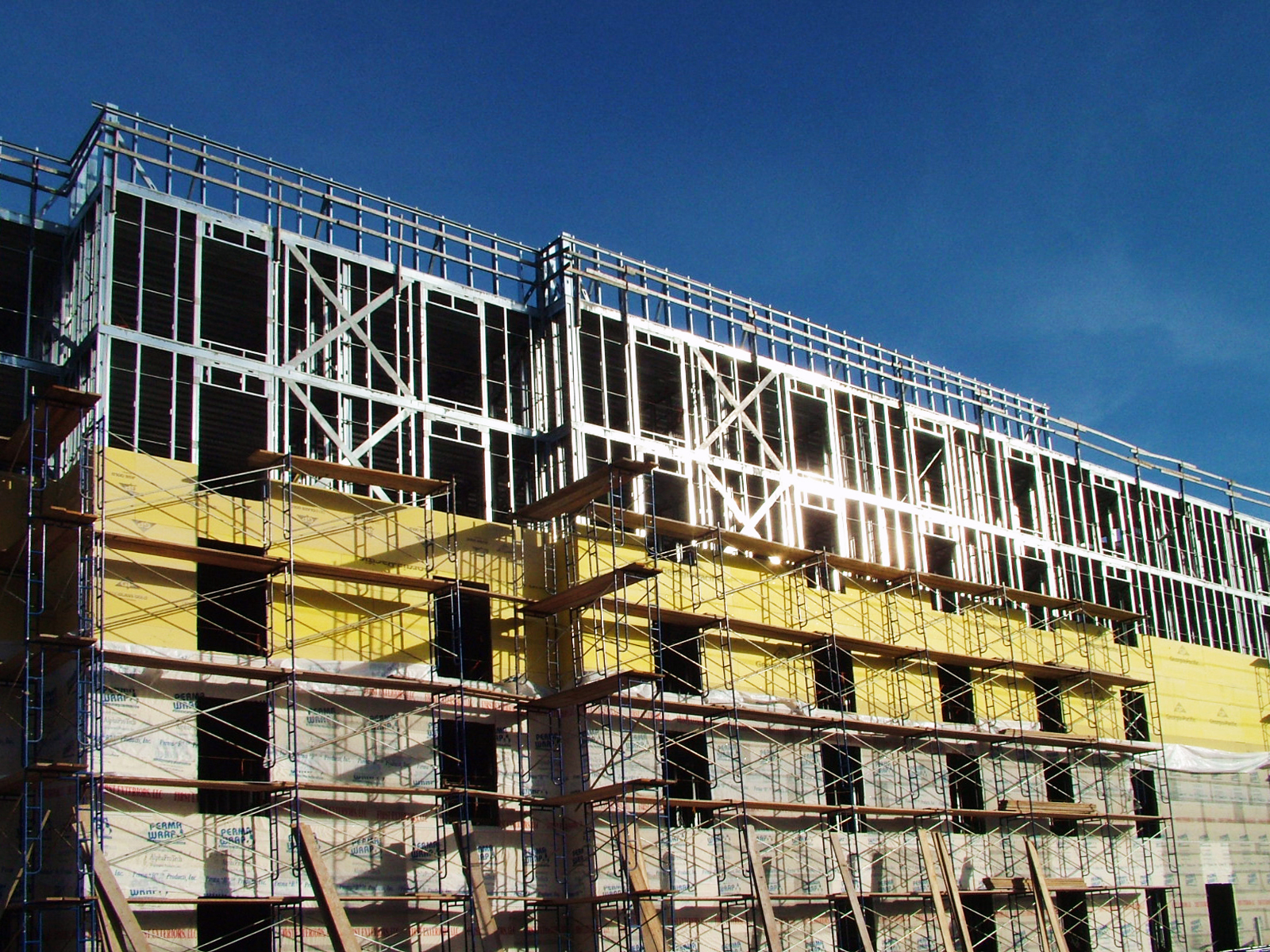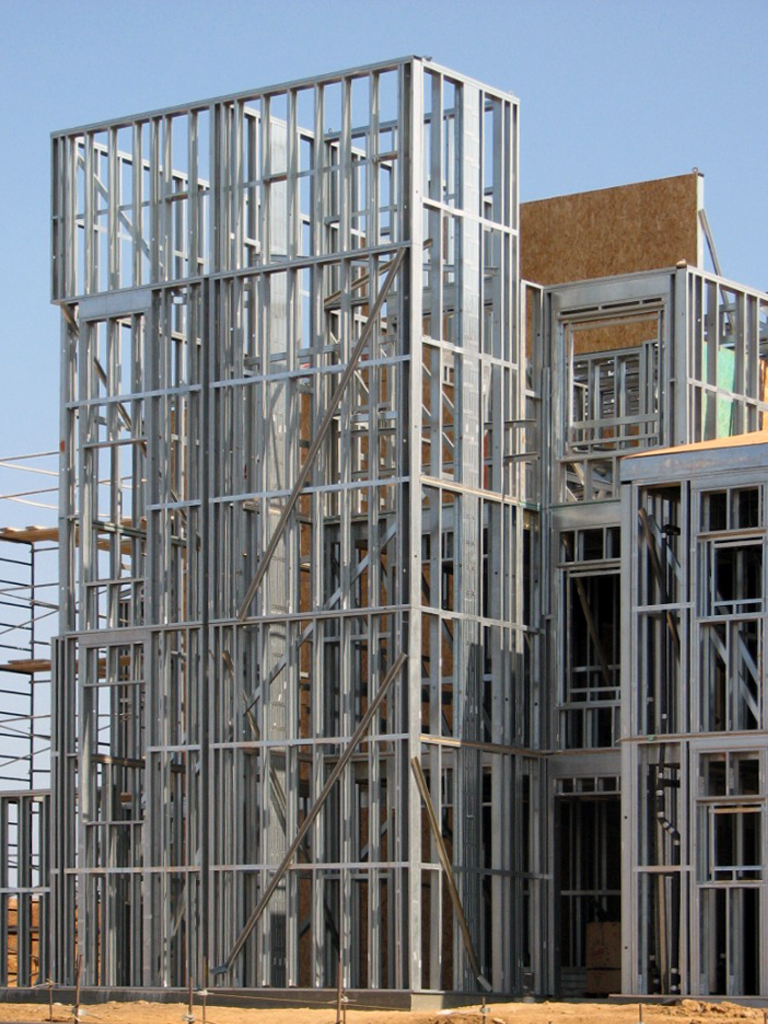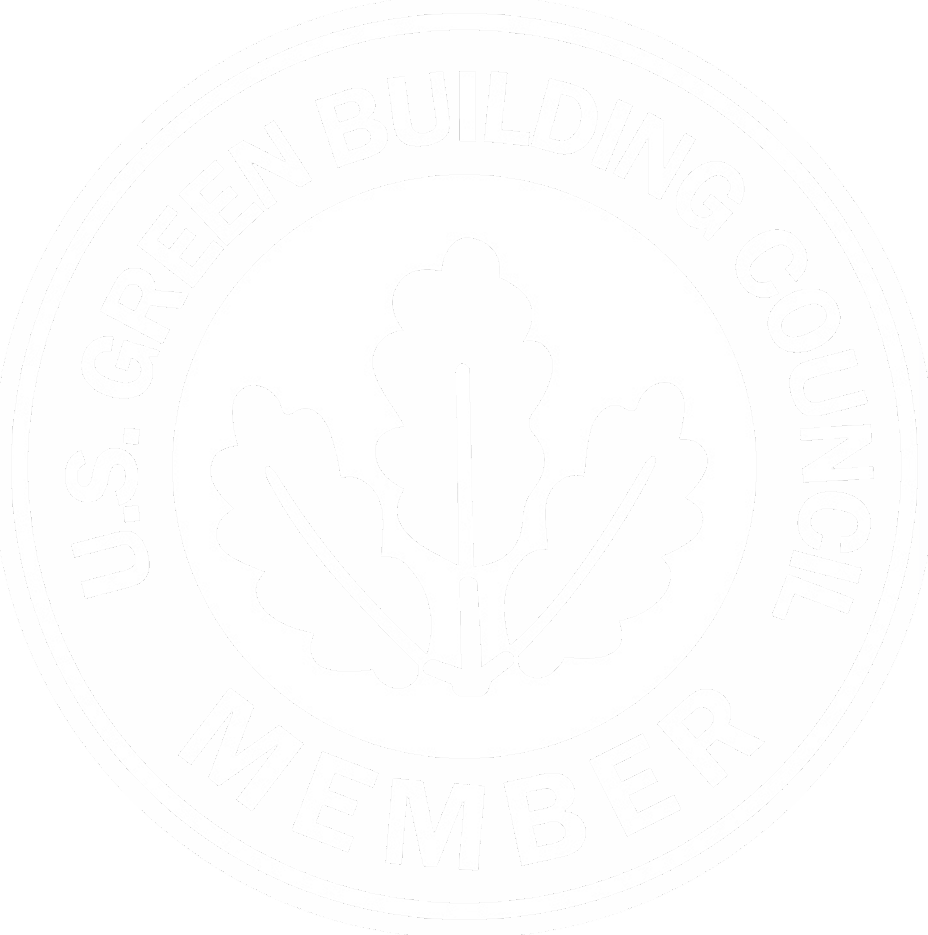
There are many cold-formed steel resources available for design professionals. This article points to resources available in the building industry for design professionals as well as some things to consider when you begin your next project with cold-formed steel framing, particularly structural application.
Cold-formed steel has been used for decades in industries including automotive, workplace furniture, heavy civil engineering, and infrastructure. In the building industry, cold-formed steel has taken on a certain identity crisis. From nomenclature, equivalent thicknesses, and member designation, the development of these codes and standards has been led by the American Iron and Steel Institute (AISI), among others. Some of the advantages of Cold-Formed Steel include a tremendous strength to weight ratio and dimensional stability, not to mention the high accuracy of sizing when fabricating various members and accessories.
There are many cold-formed steel resources available for design professionals. This article points to resources available in the building industry for design professionals as well as some things to consider when you begin your next project with cold-formed steel framing, particularly structural application.
We want to assist you in taking advantage of cold-formed steel’s properties. This guide illustrates best practices for architects that utilize cold-formed steel members and assembles in their projects as well as things to consider when designing your next project utilizing cold-formed steel.
If you ever asked these questions, this guide is for you!
- What do I need to know about cold-formed steel?
- What documents on cold-formed steel are available to design professionals and specification writers?
- What resources are available when utilizing cold-formed steel in both structural and non-structural applications?
Cold-Formed Steel Best Practices – Consider these things when beginning your next cold-formed steel framing project:
- Know the basics. Will your framing carry the load of the building? Will your project be subject to wind loads? Is this an interior wall and ceiling application? Knowing the installation basics will help identify a strategy for overall constructability, and cost.
- Consider engaging Super Stud’s Design-Assist services and engineering support when planning your next project. Engaging with your building product manufacturer during schematic design ensures the desired material will be secured.
- Some examples of when it is helpful to engage with a building product manufacturer early in the design process include:
- Your project requiring special LEED criteria towards certification such as mill certificates or Environmental Product Declarations
- An opportunity for panelization and off-site fabrication
- Efficiencies in the overall design that can save time and money
- Value-engineering and design-assist strategies that prevent ‘over-engineering’
- Cost savings for your owners that can be established in the predesign phase
- Hire a specification writer. Hiring a specification writer to develop a seamless connection of project materials and design strategies. Engaging a specification writer early will help to not compromise design intent and negatively impact the overall success of the project. Specification writers know specifics on deflection limits, code requirements, approved assemblies, and installation.
- Engage Specialty engineers that focus on cold-formed steel framing connection details and shop drawings. Super Stud has access to the best specialty engineers for cold-formed steel framing. Don Allen, PE, LEED AP, Super Stud Building Products’ Director of Engineering, has been in the industry for over 25 years.
- Refer to framing using decimal inch or mil thicknesses rather than gauges. Using minimum base metal thicknesses, rather than gauge, ensures that manufactures like Super Stud can supply material that indeed meets specifications. Nonstructural stud and track from several manufacturers have been engineered to allow thinner steel to perform better both structurally and acoustically. These ‘EQ’ or equivalent studs use higher strength steel to substitute studs like a 19 mil EQ for a traditional 30 mil framing member: resulting in reduced costs and lower environmental impact.

Cold-Formed Steel Codes and Standards: Where can I find them?
The American Iron & Steel Institute (AISI) Committee on Framing Standards has developed framing standard documents that include specifics on cold-formed steel framing. In 2015, the six AISI cold-formed steel framing standard documents, AISI S200, S210, S211, S212, S213, and S214, were consolidated into a comprehensive multi-topic standard, the North American Standard for Cold-Formed Steel Structural Framing, AISI S240. This latest standard includes design provisions for wall systems, floor and roof systems, lateral force-resisting systems, as well as truss and header assemblies. For nonstructural member design, AISI S220 governs the design, and when specific seismic detailing is required, AISI S400, North American Standard for Seismic Design of Cold-Formed Steel Structural Systems, is the applicable framing design standard.
The 2015 International Building Code (IBC) references AISI S100 and the old AISI S200 series standards in Chapter 22. The 2018 International Building Code (IBC) references AISI S220, S240, and S400. Section 2211, Cold-Formed Steel Light-Frame Construction, states that cold-formed steel light-frame construction, the design, and installation of the following structural framing systems, including their members and connections, shall be in accordance with AISI S240, and Sections 2211.1.1, which includes: floor and roof systems, structural walls, shear walls, strap-braced walls and diaphragms that resist in-plane lateral loads and trusses.
Additionally, the North American Standard for Cold-Formed Steel Framing – Product Data, AISI S201, provides criteria for standardized products, AISI S202 serves as the industry code of standard practice, and AISI S230 provides a prescriptive method for one- and two-family dwellings.
It should be noted that the newly developed and updated AISI framing standards refer to AISI S100-12 (10), not AISI S100-16, due to the sequencing of the documents in the standard development schedule.
In summary, AISI utilizes two primary documents:
- AISI S220 Cold-Formed Steel Framing – Non-Structural Members
- AISI S240 for Cold-Formed Steel Structural Framing
AISI S400 includes the Seismic Design of Cold-Formed Steel Structural Systems and is used where applicable. Free Downloads of the American Iron & Steel Institute (AISI) standards can be downloaded free here.

Technical Guides, Fire & Acoustical Data, & Technical Notes
Additionally, The Steel Framing Alliance has published A Guide to Fire & Acoustic Data for Steel Floor, Wall & Roof Assemblies. This document is available as a PDF download from the SFA’s website here.
The Steel Stud Manufacturers Association (SSMA) has its product technical guide available as a PDF download. SSMA, in collaboration with the American Iron and Steel Institute (AISI), has developed and adopted a standard designator system for identifying cold-formed steel framing members. Utilizing a standardized system eliminates confusion caused by manufacturers' varied member designators and proprietary technologies in the cold-formed steel industry.
The Steel Framing Industry Association (SFIA) “Technical Guide for Cold‐Formed Steel Framing Products,” provides with a comprehensive tool for designing with cold‐formed steel framing members. The guide covers both structural and non‐structural applications and complete load and span tables for most applications.
The Cold-Formed Steel Engineers Institute has developed a series of technical notes available for purchase. Some of these topics include Fire Assemblies of Cold-Formed Steel Construction, Fasteners for Cold-Formed Steel Framed Construction and Attachment of CFS Framing to Precast, Post-Tensioned, and Hollow-Core Concrete, among many others. These technical notes are excellent resources for any architect or specifier that utilizes cold-formed steel systems.
What CSI Division is Structural Cold-Formed Steel? Non-Structural Cold-Formed Steel?
- Division 5: Structural Metal Framing (Specification section 05 40 00)
- Division 9: Nonstructural Metal Framing (Specification section 09 22 16)
Should I call Structural Steel Cold-Formed Steel and Non-structural, interior framing or curtain wall framing light gauge? What’s the difference?
The Steel Industry and construction industry recognizes both structural and non-structural framing materials as cold-formed metal framing. Steel thickness, however, does determine the application.
What are some helpful cold-formed steel framing resources that are available to architects and specifiers?
- Super Stud’s Technical Resources Archive
- Super Stud Cold-Formed Metal Framing ARCAT Specifications
- Super Stud MasterSpec Listings for Division 5 Cold-formed metal framing (Structural) and Division 9 Cold-Formed Metal Framing
- American Iron & Steel Institute (AISI)
- Steel Framing Alliance (SFA)
- Cold-Formed Steel Engineering Institute (CFSEI)
- Wei-Wen Yu Center for Cold-Formed Steel Structures (CCFSS)
- Steel Framing Industry Association (SFIA)
- Steel Stud Manufacturers Association (SSMA)
- Environmental Product Declaration for Cold-Formed Steel
About Super Stud Building Products
Since 1973, Super Stud Building Products, Inc., with its roots in the New York Tri-State area, has been a proud manufacturer of the building industry’s most diverse offerings of steel framing components and accessories for use in the construction of commercial, institutional and residential structures. With manufacturing plants in Edison, New Jersey and Hattiesburg, Mississippi, Super Stud is a multi-regional steel framing and accessories manufacturer committed to quality products, unmatched service, competitive pricing and timely deliveries across the entire East Coast and beyond. Super Stud plays an active role in the steel framing industry, participating in the American Iron and Steel Institute (AISI), the Association of Walls and Ceilings International (AWCI), ASTM International and the Steel Framing Alliance (SFA). To learn more, visit buysuperstud.com.













